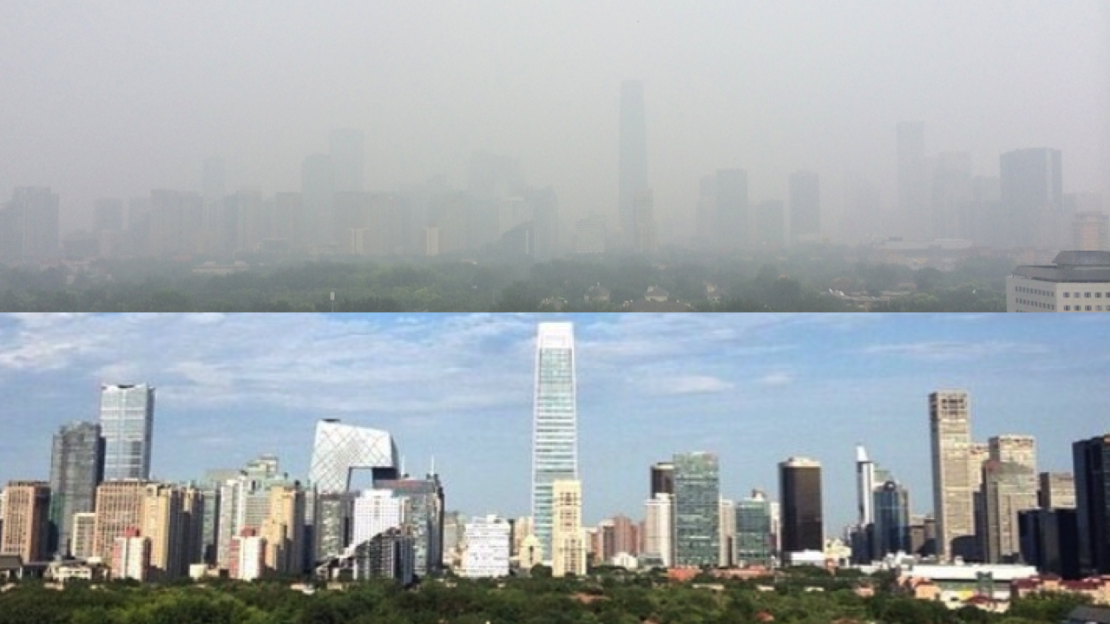Story highlights
China tries to create clear, blue skies before high-profile events
Researchers say this approach backfires and makes smog worse
China’s temporary fixes to create clean air during high-profile and politically sensitive events are making smog worse in the long term, an academic study has found.
For a three-year period, a team of researchers from Peking University and Fudan University sampled air quality in 189 cities before and after the annual showpiece meeting of China’s parliament and top advisory body in March, known locally as the two sessions.
It’s a time when local governments in China, especially in the smog-prone north, try to create clear skies by imposing temporary bans on heavy polluters, shutting factories and limiting the number of vehicles on the road.
The researchers found that pollution levels bounced back dramatically and levels were even worse than expected after the meetings had finished.
The study was published in May in the journal China Industrial Economics but was largely ignored by China’s state media. It has been widely discussed on social media in recent weeks as the winter typically brings heavier pollution.
Beijing has issued its first red alert for pollution this year, with severely high levels of smog expected in northern China for five days from 8 p.m. Friday.
“‘The political blue sky’ comes with the price of retaliatory pollution after political events,” the study concluded.
While the research doesn’t explore the cause of pollution rebound, ramping up production to compensate for economic losses during the ordered shut down is likely to blame, Guo Feng, one of the authors from Peking University, told CNN.
Could this smog-eating tower end pollution?
Welcome to China’s most polluted city
‘APEC blue’
In 2014, Internet users coined the wry term “APEC blue” for the capital’s clear skies during the two-week gathering of world leaders during the APEC summit. The blue skies vanished once the leaders had left.
Last year, azure skies during the September military parade to commemorate the end of World War II got the nickname “parade blue” and earlier this year and in the lead-up to the G20 in Hangzhou this August, 225 factories were ordered to close and half the city’s vehicles barred from roads.

Chinese designer turns sneakers into pollution masks
From December 2013 to March 2016, the researchers used the official air quality index (AQI) and measured concentrations of six pollutants including PM2.5 and PM10, the most dangerous kinds of particle.
The research showed an average 4.8% decrease in the fog and haze level measured by AQI, during the local “two sessions” and an 8.2% rebound after the meetings, when compared to average levels.
Beijing man photographs 3 years’ worth of smog from his window
While the improvement in air quality during the National People’s Congress (NPC) is noticeable, “it is nothing” compared to the 80% to 90% decrease in pollutants during international conferences such as APEC, Guo said.
“We focus on local ‘two sessions’ because the meeting is a wider practice across the nation. The sample is larger and more representative,” he added.
Guo said he had contacted various Chinese media outlets about the research but none had showed any interest. While China has been taking steps to tackle pollution, it’s still a politically sensitive topic.


